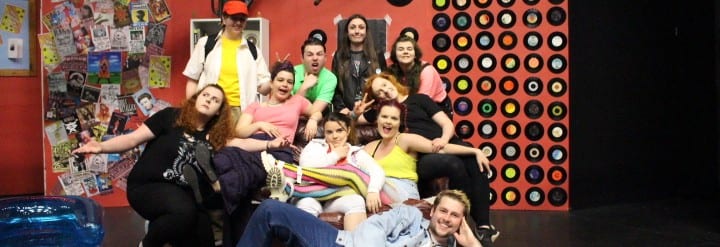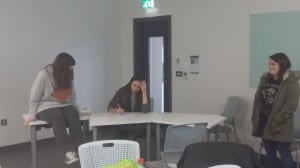During our various company rehearsals and the time we have spent workshopping ideas for our show, we have continued building the characters we began developing at the start of the process through hot-seating and improvisation exercises. The characterisations have been placed firmly in the hands of the actors with the writing team following actors’ thoughts and decisions in the sculpting of the show. We have kept up the process of pairing up characters or creating group situations within improvised scenes (Fig. 1) to see how various characters could respond to and interact with each other – a process which, in turn, helps to strengthen the characterisation beyond the very basic form it had previously taken and helps it to develop and evolve into something a lot more substantial.
It also gives us the unforeseen added benefit of making sure that we as actors are adjusted and adapting to each other’s senses of humour and usual styles of comedic acting, since some of us are quite good at making sarcastic one-liners and others are good at more physical types of comedy. It allows the company as a whole to see the actors’ individual strengths and the more improvised scenes we do together, the more people even subconsciously adapt their styles of comedy to suit their scene partner’s, even if it means using a style of comedy that they aren’t personally used to using. This sense of working together bodes well going forwards since the style of comedy that we want our show to be won’t be successful unless everyone is on the same page with it and fully committed to putting aside their own personal comedic styles and stepping a little out of their comfort zone.

